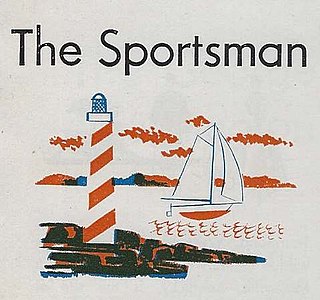
Michigan Services are three Amtrak passenger rail routes connecting Chicago, Illinois with the Michigan cities of Grand Rapids, Port Huron, and Detroit, and stations en route. The group falls under the Amtrak Midwest brand and is a component of the Midwest Regional Rail Initiative.

The Michigan Central Railroad was originally incorporated in 1846 to establish rail service between Detroit, Michigan, and St. Joseph, Michigan. The railroad later operated in the states of Michigan, Indiana, and Illinois in the United States and the province of Ontario in Canada. After about 1867 the railroad was controlled by the New York Central Railroad, which later became part of Penn Central and then Conrail. After the 1998 Conrail breakup, Norfolk Southern Railway now owns much of the former Michigan Central trackage.

The Cincinnatian was a named passenger train operated by the Baltimore and Ohio Railroad (B&O). The B&O inaugurated service on January 19, 1947, with service between Baltimore, Maryland and Cincinnati, Ohio, carrying the number 75 westbound and 76 eastbound, essentially a truncated route of the National Limited which operated between Jersey City, New Jersey and St. Louis.

Martin Luther King Jr. Plaza is the main passenger rail and intercity bus station of Toledo, Ohio.

Jackson station is a historic Amtrak station in Jackson, Michigan, United States. It is served by three daily Wolverine trains between Chicago and Pontiac and a single daily Amtrak Thruway bus between Toledo, Detroit, Jackson, and East Lansing. The station was added to the National Register of Historic Places in 2002.
The Night Express was an American named train of the Baltimore and Ohio Railroad (B&O) on its route between Detroit, Michigan, and Louisville, Kentucky, with major station stops in Toledo, Ohio, and Cincinnati. The service was numbered Train 57 southbound and Train 58 northbound. The numbers 57/58 operated on the Detroit - Cincinnati line as early as 1921. The service was provided in conjunction with the Pere Marquette Railroad from Detroit to Toledo and with the Louisville and Nashville from Cincinnati to Louisville with connections to New Orleans.
Spier, Rohns & Gehrke was a noted Detroit, Michigan architectural firm operated by Frederick H. Spier and William C. Rohns, best remembered for designs of churches and railroad stations. These were frequently executed in the Richardson Romanesque style. F.H. Spier, W.C. Rohns and Hans Gehrke were authors of the Detroit Chamber of Commerce, tallest building in the city at the time of construction (1895). Hans Gehrke's well known structures include the Fire Department Headquarters on Larned Street in Detroit, and residence of Robert C. Traub in Arden Park residential district of Detroit.

Battle Creek station, listed in the National Register of Historic Places as the Penn Central Railway Station, is a disused train station in Battle Creek, Michigan. It opened on July 27, 1888. Rogers and MacFarlane of Detroit designed the depot, one of several Richardsonian Romanesque-style stations between Detroit and Chicago in the late nineteenth century. Masonry of Lake Superior red sandstone, noted for its distinctive patterns, provides one of the most striking aspects of the Depot's exterior. Another prominent feature of the Depot is its clock tower.
Peter G. "Pete" Jubeck was a Czech-American businessman who founded, with partner Robert Swartz, the restaurants Sir Pizza of Michigan and Clara's Lansing Station, both in Lansing, Michigan, and with partner Ross Simpson, Clara's on the River in Battle Creek, Michigan.
The Plymouth Subdivision is a freight railroad line in the U.S. state of Michigan. It is owned by CSX. It connects the Plymouth Diamond at milepost CH 24.5 to Grand Rapids at CH 148.1, passing through the Lansing metropolitan area en route. Other towns served include South Lyon, Brighton, Howell, Fowlerville, Williamston, Grand Ledge, Lake Odessa, Clarksville, and Alto. Operationally, it is part of the CSX Chicago Division, dispatched from Jacksonville, Florida.

The Flint & Pere Marquette Union Station, commonly known as the Potter Street Station, is a former railroad station built in 1881 and used until 1950 located at 501 Potter Street in Saginaw, Michigan, United States. It was designed by New York City architect Bradford Lee Gilbert. The station is 285 feet by 40 feet with 2½ stories.

The Fort Street Union Depot was a passenger train station located at the southwest corner of West Fort Street and Third Street in downtown Detroit, Michigan. It served the city from 1893 to 1971, then demolished in 1974. Today, the downtown campus of Wayne County Community College occupies the site.

The Pere Marquette was a streamlined passenger train operated by the Pere Marquette Railway and its successor the Chesapeake and Ohio Railway (C&O) between Detroit and Grand Rapids, Michigan. It operated from 1946 to 1971. It was the first new streamliner to enter service after World War II. Although discontinued in 1971 on the formation of Amtrak, in 1984 Amtrak revived the name for a new train between Chicago, Illinois and Grand Rapids.

The Chesapeake & Ohio Railway Station is a railway depot located in Pioneer Park on West Lake Street in Petoskey, Michigan. It was placed on the National Register of Historic Places in 1970. The building now houses the Little Traverse Historical Museum.

The Chicago and West Michigan Railroad Charlevoix Station is a railroad depot located on Chicago Avenue in Charlevoix, Michigan. It was listed in the National Register of Historic Places in 1995.

The Union Depot is a railway station located at 610 Western Avenue in Muskegon, Michigan. It was listed on the National Register of Historic Places in 2000. It is now the Muskegon County Convention & Visitor's Bureau.

The Pere Marquette Railway Belding Depot is a former railroad station located at 100 Depot Street in Belding, Michigan. It was listed on the National Register of Historic Places in 1997. It is owned and used by the city of Belding.

Grands Rapids Union Station was a union station in Grand Rapids, Michigan. A Georgian Revival building of two stories, it was built in 1900 and was closed in 1958 and demolished over 1958 and 1959 to make space for a highway. Its address was 61 Ionia Avenue. It was a hub serving a few railroads going to different points in Michigan and other points in the Midwest.

The Resort Special was a seasonal night train from Chicago, renowned for serving resort towns such as Traverse City, Charlevoix, Petoskey on the northwestern part of Michigan’s lower peninsula. Begun by the Pere Marquette Railway, it was a rare instance of a named Pere Marquette train continuing after the Chesapeake & Ohio absorbed the Pere Marquette Railway in 1947. In 1960s, the C&O shifted the Resort Special name to a White Sulphur Springs, West Virginia to New York City route.

The Sportsman was a named passenger night train of the Chesapeake and Ohio Railway. It was the Chesapeake and Ohio's long-standing train bound for Detroit from Washington, D.C., and Phoebus, Virginia, on the Chesapeake Bay, opposite Norfolk, Virginia. It was unique among C&O trains for its route north from the C&O mainline in southern Ohio. For most of its years it had a secondary western terminus in Louisville at its Central Station.


















